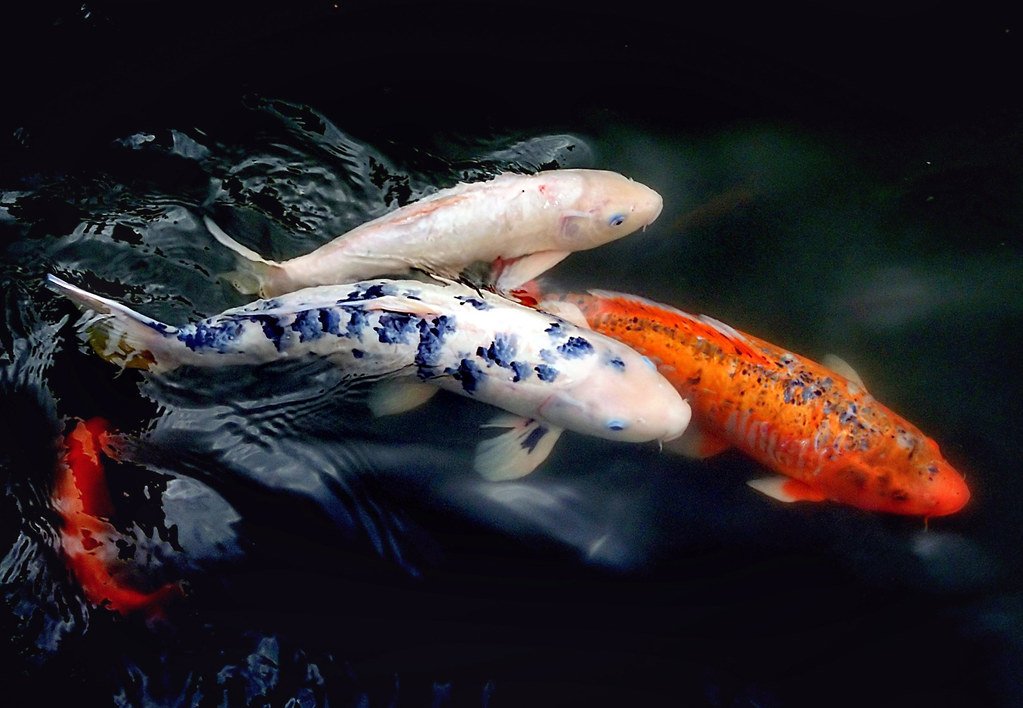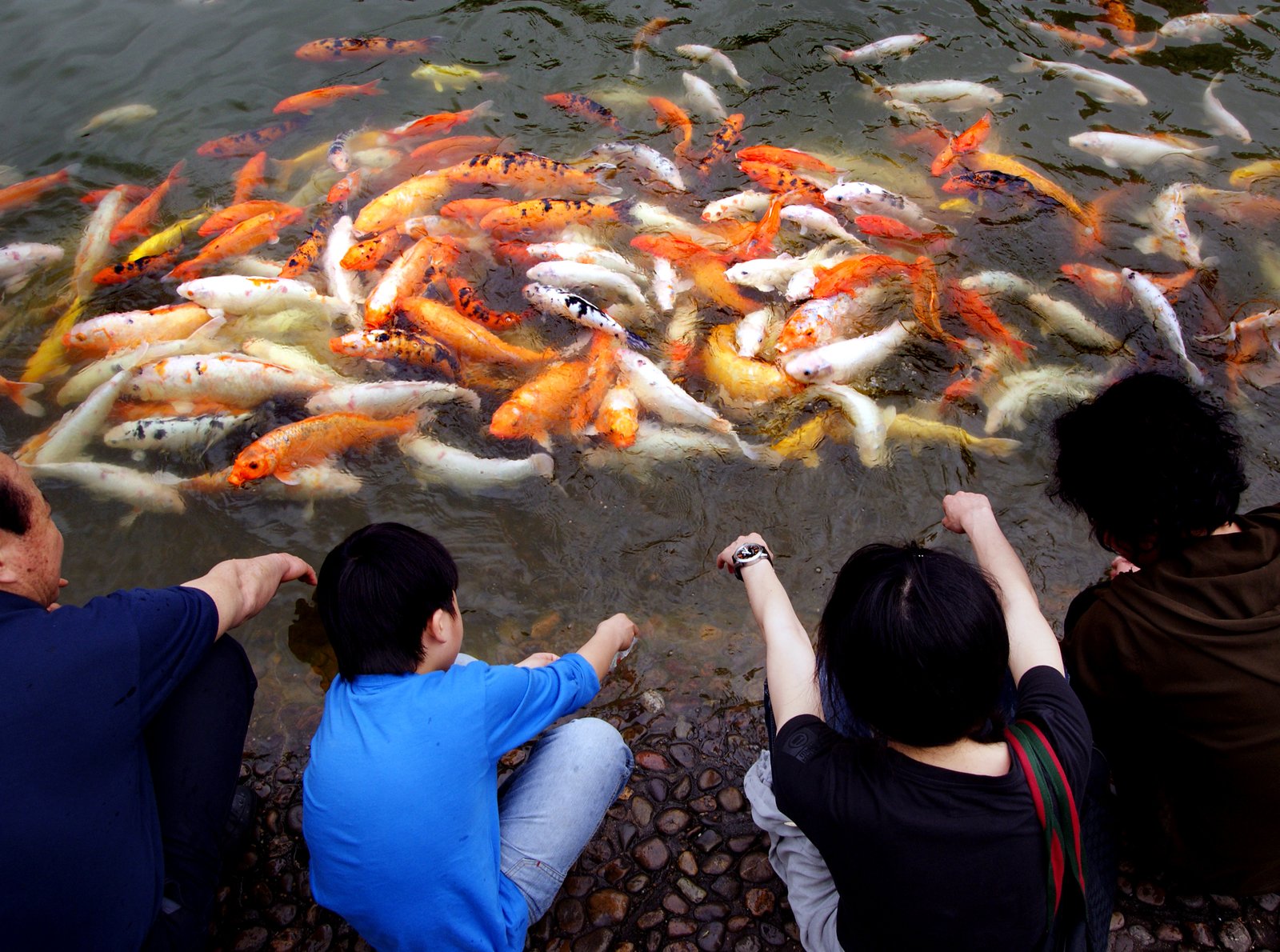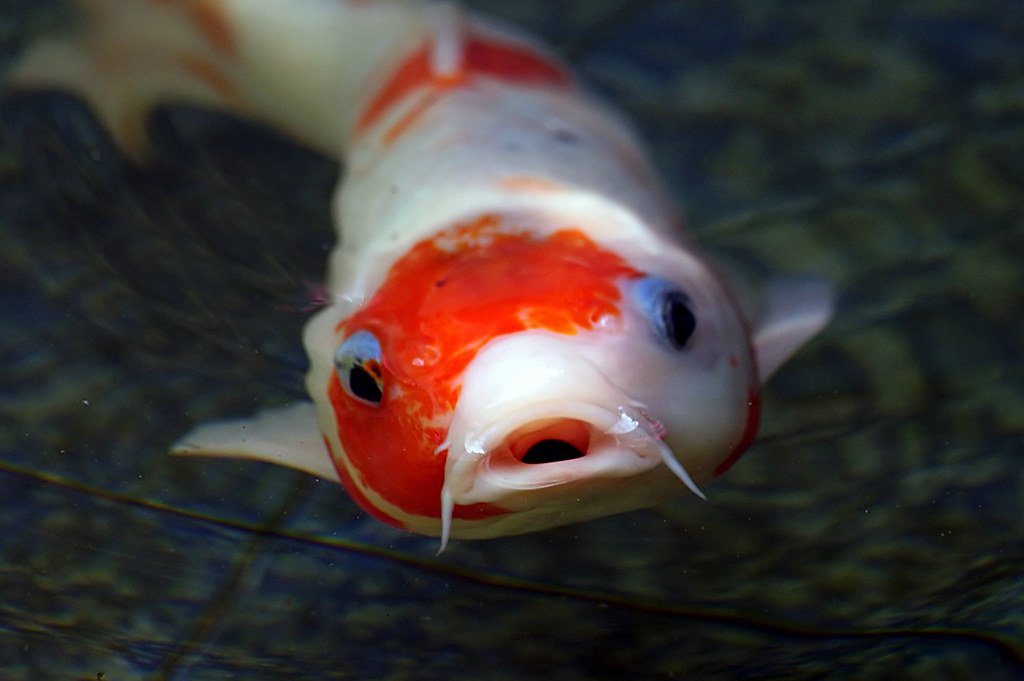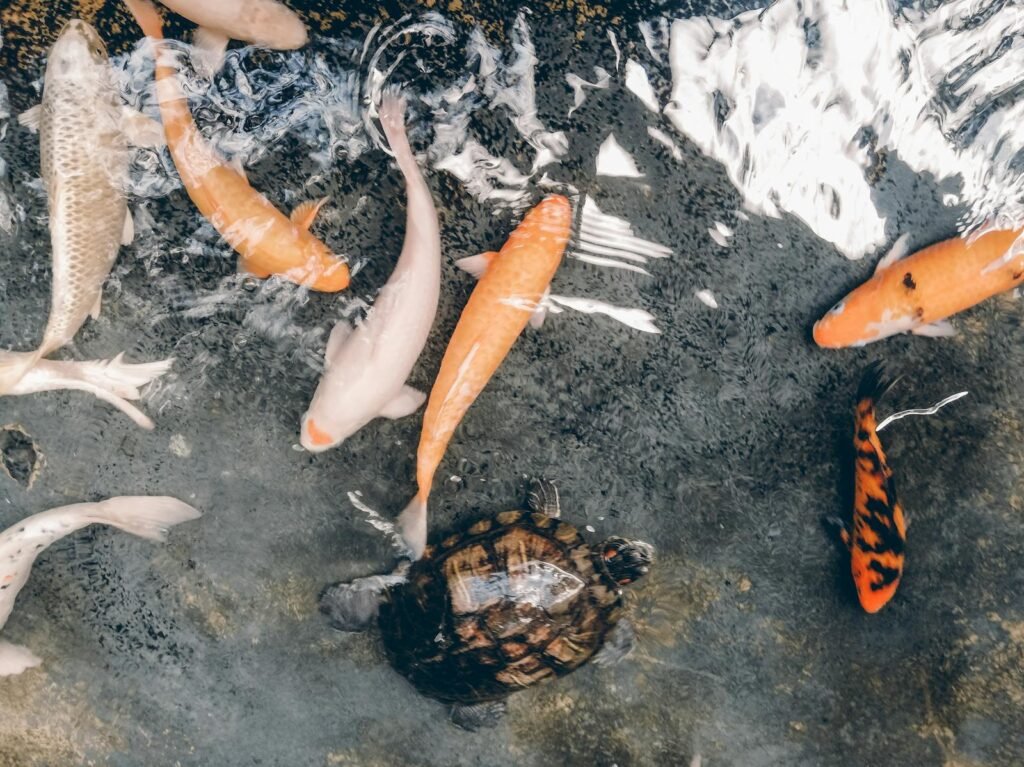Picture this: a humble muddy carp swimming in ancient Asian rivers, completely unaware that its descendants would one day sell for millions of dollars and be revered as living masterpieces. The transformation from ordinary fish to extraordinary art form represents one of the most remarkable journeys in selective breeding history. What started as a simple food source has evolved into a genetic symphony of color, pattern, and grace that continues to captivate collectors worldwide.
The Ancient Origins of Carp Domestication

The story begins over 2,000 years ago in China, where common carp (Cyprinus carpio) first caught the attention of early aquaculturists. These hardy fish were initially prized not for their beauty, but for their ability to survive in various water conditions and provide a reliable protein source. Archaeological evidence suggests that carp farming was well-established during the Han Dynasty, with ponds specifically constructed for fish cultivation.
The genetic foundation of all modern koi can be traced back to these early domesticated carp populations. Unlike their wild counterparts, these captive fish began displaying subtle variations in coloration and body shape. Early Chinese fish farmers noticed these differences and began selectively breeding individuals that showed the most promising traits.
The Journey to Japan and Cultural Transformation

Around the 5th century, Buddhist monks brought carp to Japan, where they were initially raised in temple ponds for food. The Japanese word “koi” simply means carp, reflecting the fish’s humble beginnings. However, something extraordinary happened in the mountainous regions of Niigata Prefecture during the 1820s.
Rice farmers in these isolated valleys began noticing unusual color mutations in their carp populations. Instead of the typical brown and gray coloration, some fish displayed brilliant reds, whites, and yellows. These farmers, with their keen eye for detail and patience, began systematically breeding these colorful variants. This marked the true beginning of koi as we know them today.
The Genetic Mechanisms Behind Color Variation

The stunning array of colors in modern koi results from complex genetic interactions involving multiple genes. The most fundamental color gene is the C gene, which controls the production of melanin. When this gene is functioning normally, koi display dark pigmentation. However, mutations in this gene can reduce or eliminate melanin production, creating the foundation for lighter colors.
Red coloration comes from erythrophores, specialized cells containing red pigments. The intensity and distribution of red depend on several genes working in concert. Yellow pigmentation is controlled by xanthophores, while the metallic sheen seen in some varieties results from iridophores that reflect light. The interplay between these different pigment cells creates the spectacular range of colors we see in modern koi.
The Role of Selective Breeding in Shaping Modern Varieties

Japanese koi breeders developed an almost scientific approach to selective breeding long before modern genetics was understood. They carefully documented lineages, tracked color inheritance patterns, and made detailed observations about which breeding pairs produced the most desirable offspring. This methodical approach accelerated the development of distinct koi varieties.
The breeding process typically involves spawning thousands of fish and then culling the vast majority that don’t meet strict standards. Only the most exceptional individuals are kept for further breeding or sale. This intense selection pressure has resulted in koi that are dramatically different from their wild ancestors, with enhanced colors, modified body shapes, and unique pattern distributions.
Understanding Koi Genetics Through Modern DNA Analysis

Recent advances in genetic sequencing have revolutionized our understanding of koi genetics. Scientists have identified specific genes responsible for various traits, including the tyrosinase gene that affects black pigmentation and the ASIP gene that influences yellow coloration. These discoveries have validated many of the breeding practices developed through centuries of observation and trial.
Genome mapping has also revealed the complex polyploid nature of many koi varieties. Unlike most animals that have two sets of chromosomes, some koi possess three or even four sets. This genetic complexity contributes to their diverse appearance but also makes breeding outcomes less predictable than in simpler organisms.
The Development of Major Koi Varieties

The foundation varieties of koi emerged through careful selection of specific genetic traits. Kohaku, featuring white bodies with red markings, became the standard by which all other varieties are measured. The genetic basis for this pattern involves the interaction between genes controlling red pigment production and those affecting its distribution across the body.
Sanke and Showa varieties added black markings to the basic red and white pattern, requiring additional genetic components. These tri-colored koi demonstrate how multiple mutations can be combined to create increasingly complex and beautiful patterns. Each variety represents a unique genetic combination that breeders work to stabilize and perfect.
The Science of Pattern Inheritance

One of the most fascinating aspects of koi genetics is how patterns are inherited. Unlike simple traits controlled by single genes, koi patterns result from the interaction of multiple genetic factors. The timing of gene expression during development determines where and when different pigments appear on the fish’s body.
Pattern inheritance follows complex rules that even experienced breeders find challenging to predict. A perfect parent may produce offspring with completely different patterns due to genetic recombination. This unpredictability adds both excitement and frustration to the breeding process, as the next generation might produce a once-in-a-lifetime specimen.
Environmental Influences on Genetic Expression

While genetics provide the blueprint for koi coloration and patterns, environmental factors significantly influence how these traits are expressed. Water temperature, pH levels, diet, and even stress can affect pigment production and distribution. This phenomenon, known as phenotypic plasticity, means that genetically identical fish can look quite different under varying conditions.
Many koi change color throughout their lives, with patterns becoming more pronounced or colors deepening with age. This dynamic nature adds another layer of complexity to breeding programs, as breeders must consider not only a fish’s current appearance but also its potential for future development.
The Global Spread and Genetic Diversity

As koi spread from Japan to the rest of the world, new breeding programs introduced fresh genetic material into established lines. Israeli, American, and European breeders began developing their own strains, sometimes incorporating genes from wild carp populations to increase genetic diversity. This global exchange has enriched the overall koi gene pool.
However, the focus on specific aesthetic traits has also led to some genetic bottlenecks. Intensive inbreeding to maintain desired characteristics has reduced genetic diversity in some lines, making them more susceptible to diseases and environmental stresses. Modern breeders are increasingly aware of the need to balance beauty with genetic health.
Molecular Markers and Breeding Efficiency

Contemporary koi breeding increasingly relies on molecular markers to identify fish carrying desirable genes. Instead of waiting years to see how offspring develop, breeders can now test juveniles for specific genetic markers associated with superior traits. This technology dramatically improves breeding efficiency and reduces the time needed to develop new varieties.
DNA fingerprinting also helps maintain accurate breeding records and prevents inbreeding depression. By tracking genetic relationships between individual fish, breeders can make more informed decisions about which animals to pair, maximizing the chances of producing exceptional offspring while maintaining genetic health.
The Economics of Genetic Excellence

The market value of koi directly correlates with their genetic quality and rarity. Champion bloodlines command premium prices, with some individual fish selling for hundreds of thousands of dollars. This economic reality drives continuous innovation in breeding techniques and genetic research, as breeders seek to produce the next generation of award-winning koi.
The genetics of koi have created an entire industry built around the pursuit of perfection. Specialized feeds designed to enhance color expression, advanced filtration systems to maintain optimal water conditions, and sophisticated breeding facilities all contribute to maximizing the genetic potential of these remarkable fish.
Health Challenges in Highly Bred Koi

The intensive selection for aesthetic traits has sometimes come at the cost of overall health and vigor. Some highly bred koi lines suffer from reduced immune function, increased susceptibility to diseases, and shortened lifespans. These issues highlight the importance of considering genetic health alongside visual appeal in breeding programs.
Modern breeders are increasingly incorporating health testing into their programs, screening for genetic disorders and selecting for disease resistance. This holistic approach aims to produce koi that are not only beautiful but also robust and long-lived, ensuring the sustainability of the hobby for future generations.
Conservation Genetics and Wild Carp Populations

The genetic legacy of koi extends beyond ornamental ponds to conservation efforts for wild carp populations. Many wild common carp populations have been depleted or genetically compromised through habitat loss and pollution. Koi breeding programs maintain genetic diversity that could be crucial for future conservation efforts.
Some researchers are studying whether genetic techniques developed for koi breeding could be applied to enhancing wild carp populations. This work represents a fascinating intersection between ornamental fish breeding and conservation biology, where the pursuit of beauty contributes to broader ecological goals.
Future Directions in Koi Genetic Research

Emerging technologies like CRISPR gene editing and advanced genomic sequencing are opening new possibilities for koi breeding. While controversial, these tools could potentially allow for more precise genetic modifications, creating entirely new varieties or correcting genetic defects. The ethical implications of such interventions continue to be debated within the koi community.
Artificial intelligence and machine learning are also beginning to play roles in breeding programs, analyzing vast datasets to predict breeding outcomes and identify optimal genetic combinations. These technological advances promise to accelerate the development of new varieties while maintaining genetic diversity and health.
The Art and Science of Judging Genetic Quality

Koi competitions have evolved sophisticated judging criteria that effectively evaluate genetic quality through visual assessment. Judges examine body conformation, color intensity, pattern clarity, and overall presence – all traits with strong genetic components. This standardized evaluation system has driven breeding improvements by clearly defining desirable characteristics.
The judging process itself has become a bridge between art and science, where aesthetic appreciation meets genetic understanding. Experienced judges can often predict breeding potential by recognizing subtle genetic markers that indicate superior bloodlines, making the competition circuit an essential part of the breeding ecosystem.
Cultural Impact and Genetic Preservation

The genetic history of koi is inextricably linked with Japanese culture and the philosophy of continuous improvement, or “kaizen.” This cultural context has shaped breeding practices, emphasizing patience, attention to detail, and respect for the living art form. The preservation of traditional breeding methods alongside modern genetic techniques maintains this cultural heritage.
Genetic preservation efforts now include maintaining breeding records, preserving sperm and eggs through cryogenic storage, and documenting the histories of important bloodlines. These efforts ensure that the genetic achievements of past generations remain available for future breeding programs, maintaining the continuity of this remarkable transformation from carp to living art.
The Living Laboratory of Genetic Expression

Every koi pond represents a living laboratory where genetic principles play out in real-time. Owners observe how environmental changes affect their fish’s appearance, how different bloodlines interact when bred together, and how genetic potential is realized through proper care. This hands-on experience with genetics makes koi keeping both educational and deeply rewarding.
The dynamic nature of koi genetics means that even the most carefully planned breeding can produce surprises. A fish that appears ordinary as a juvenile might develop into a stunning adult, while a promising youngster might not fulfill its genetic potential. This unpredictability keeps the hobby exciting and reminds us that genetics is about possibilities rather than certainties.
The transformation of humble carp into the magnificent koi we admire today represents one of humanity’s most successful collaborations with nature. Through centuries of careful observation, selective breeding, and now modern genetic techniques, we have unlocked the artistic potential hidden within fish DNA. This journey from muddy bottom-feeders to living masterpieces demonstrates the power of genetic diversity and the patience required to realize it. As we continue to unravel the mysteries of koi genetics, we gain not only more beautiful fish but also deeper insights into the fundamental processes that shape all life. The next time you gaze into a koi pond, remember that you’re witnessing the culmination of thousands of years of genetic artistry. What other hidden masterpieces might be waiting in the DNA of seemingly ordinary creatures?




